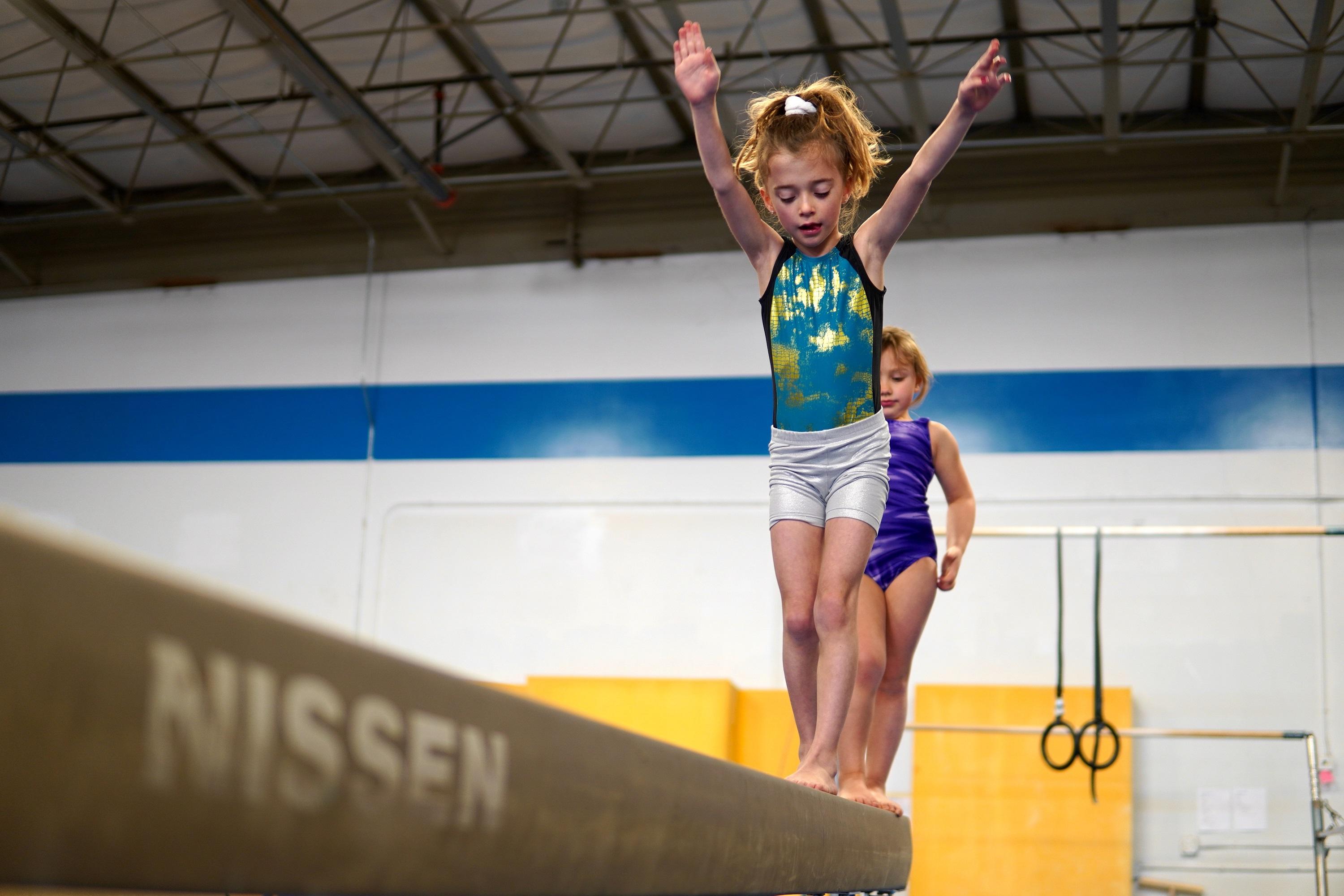- Home
- »Articles
- »Sport
- »Gymnastics
- »At What Age Can My Child Learn Gymnastics?



At What Age Can My Child Learn Gymnastics?
14 February 2023
Most parents start thinking about their child’s physical development and activities as soon as they are born. But the options can be overwhelming, especially when it comes to gymnastics. What type of gymnastics is best for my child? When should they start? Here is a brief guide to the different types of gymnastics available for different age groups.
Toddlers (1-3 years old)
At this age, toddlers are just starting to develop their gross motor skills – the ability to use large muscle groups to perform tasks like walking, running, and climbing. Because of this, they are not yet ready for structured gymnastics classes. However, there are still plenty of ways to encourage their physical development.
Parent-child classes: These classes are designed for parents and their toddlers to participate together. They usually involve a lot of play, singing, and simple movement exercises.
Open gym time: Many gyms offer open gym time where parents can bring their toddlers to explore the equipment in a safe and supervised environment. This is a great way to introduce your child to the sport and see if they enjoy it.
Preschoolers (3-5 years old)
At this age, preschoolers are starting to develop their fine motor skills – the ability to use small muscle groups to perform tasks like writing, drawing, and buttoning a shirt. They are also becoming more aware of their bodies and how they move through space. This is the perfect time to start formal gymnastics classes.
Pre-school classes: These classes focus on developing basic gymnastics skills, coordination, and body awareness. They usually involve a lot of play, games, and simple movement exercises.
School-age Kids (5-12 years old)
At this age, kids are continuing to develop their gross and fine motor skills. They are also starting to develop their cognitive skills – the ability to think abstractly and understand complex concepts. This is the perfect time to start more advanced gymnastics classes.
Recreational classes: These classes focus on developing basic to intermediate gymnastics skills. They usually involve a lot of play, games, and simple to complex movement exercises.
Competitive classes: These classes focus on developing advanced gymnastics skills. They usually involve a lot of drills, conditioning, and complex movement exercises.
Young Teens (13-15 years old)
At this age, teens are continuing to develop their gross motor skills. They are also continuing to develop their cognitive skills, which allows them to better understand and execute more complex movements. This is why most gymnastics programs for teens focus on developing these skills further, while also teaching them how to apply them in routines.
Recreational classes: These classes focus on having fun, developing coordination, and learning basic gymnastics skills.
Competitive classes: These classes focus on developing advanced skills needed to compete in gymnastics competitions. They generally include a lot of exercises, conditioning, and intricate movement routines.
Older Teens (16-20 years old)
This is the age where kids can start competing in elite competitions if they choose to. But not all gymnasts want to compete at this level. Some just want to stay involved in the sport for fun and exercise. And that’s OK! There are still plenty of options for older teens who want to stay involved in gymnastics.
Recreational classes: Most gyms offer recreational classes for older kids and teens. These classes are typically an hour long and meet once or twice a week. The focus is on having fun, staying active, and learning new skills.
Competitive teams: If your child is interested in competing, there are several levels of competition they can participate in. Local competitions are typically held at the club level and don’t require as much time or travel as national competitions.
There are many different types of gymnastics classes available for kids of all ages. Depending on your child’s age and development level, there is a class that’s perfect for them. And if you’re not sure where to start, most gyms offer free trials so you can explore the different options and find the right fit for your family.
Ready to get started? Find out about the best gymnastics classes for kids in London and Manchester.
Photo by Brett Wharton on Unsplash
